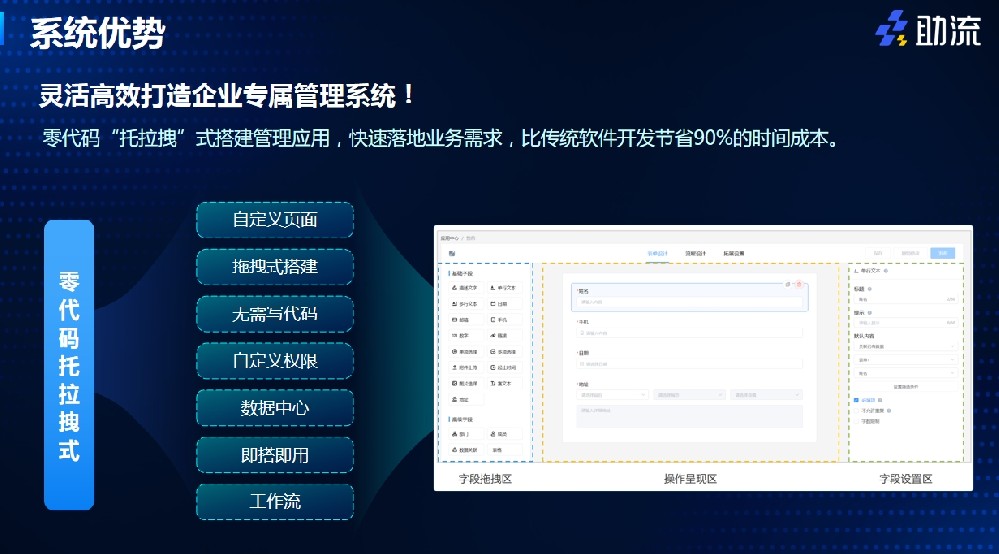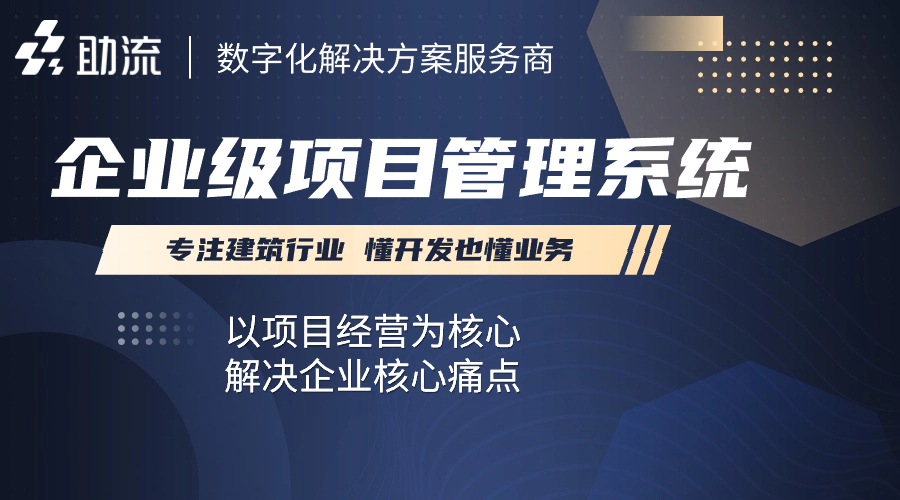随着工程建设行业的快速发展,工程施工项目管理的复杂性和难度逐渐增加。为了提高项目管理效率和质量,许多企业开始关注工程施工项目管理系统的设计与实现。本文助流将介绍传统系统设计方式与基于零代码“托拉拽”式搭建管理系统的优势比较,以期为企业提供更多选择和参考。
一、系统设计背景
工程施工项目管理系统的设计旨在提高项目管理的规范化、标准化和信息化水平,确保工程建设的顺利进行。该系统需要实现对工程项目全生命周期的管理,包括项目规划、设计、采购、施工、验收等环节。同时,系统还需满足企业各部门之间的信息共享和协同工作需求。
二、传统系统设计方式
传统系统设计方式通常采用前后端分离的方式进行开发。前端负责用户交互和界面展示,后端负责数据处理和业务逻辑实现。数据存储和处理一般采用关系型数据库,如MySQL、Oracle等。此外,后端开发语言可选择Java、Python、C#等编程语言。这种设计方式具有灵活性和可维护性高的优点,但开发成本和周期相对较长。
三、基于零代码“托拉拽”式搭建管理系统
基于零代码“托拉拽”式搭建管理系统是一种新型的系统设计方式,它通过可视化界面让用户能够以拖拽的方式进行系统组件的组装和配置,从而实现业务功能的定制化开发。该方式具有以下优点:
快速部署:由于系统组件是预先开发好的,用户可以根据实际需求进行组件的组装和配置,从而大大缩短了开发周期。
降低成本:零代码平台的使用可以减少人工编写代码的工作量,降低了开发成本。
易于维护:可视化界面使得用户能够直观地了解系统架构和业务逻辑,便于系统的维护和升级。
自定义性强:用户可以根据实际需求对系统进行定制化开发,满足企业特定的业务需求。

四、系统设计比较
成本比较:基于零代码“托拉拽”式搭建管理系统的初始投入成本相对较低,因为用户可以根据实际需求选择相应的功能模块,避免了传统方式中过度开发和浪费的情况。而传统系统设计方式需要投入大量人力物力进行前后端开发和数据库设计,成本较高。
开发时间比较:由于零代码“托拉拽”式搭建管理系统采用了预置的组件和可视化界面,可以大幅缩短系统开发时间。相比之下,传统系统设计方式需要经过前后端开发和测试等多个环节,开发周期相对较长。
系统维护比较:基于零代码“托拉拽”式搭建管理系统的可视化界面使得用户能够直观地了解系统架构和业务逻辑,便于系统的维护和升级。而传统系统设计方式需要专业技术人员进行维护和优化,对技术要求较高。
五、管理系统实现
为了实现工程施工项目管理系统的设计与实现,我们需要进行以下步骤:
需求分析:明确系统的功能需求、性能需求和使用需求,为后续的系统设计提供依据。
系统架构设计:根据需求分析结果,设计系统的整体架构和模块划分。
数据库设计:选择合适的数据库管理系统,设计数据库表结构及之间的关系。
系统开发和测试:依据架构设计和数据库设计,进行前后端开发和系统集成测试。
系统部署与上线:将系统部署到服务器并上线运行,确保系统的稳定性和可用性。
用户培训与支持:对用户进行系统操作培训,提供必要的支持和服务,确保用户能够顺利使用系统。
六、系统测试与结果展示
对系统进行测试是确保系统质量和稳定性的关键环节。测试内容应包括功能测试、性能测试、安全测试等。通过测试,我们可以验证系统的功能是否完善、性能是否达标、是否存在安全漏洞等。测试结果应进行展示,以便用户了解系统的性能和可靠性等方面的表现。

下一篇:工程采购管理与采购成本控制的方法
2025-12-09
2025-12-09
2025-12-09
2025-12-09
2025-12-09
2025-12-09
2025-12-09
2025-12-09
2025-12-09
2025-12-09